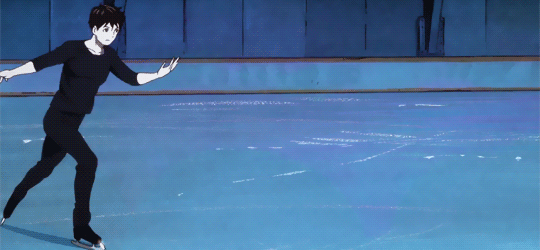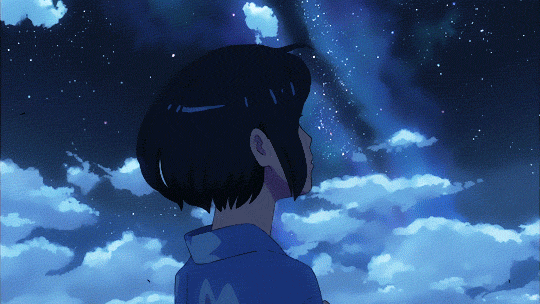The anime phenomenon worldwide has been rapidly increasing in popularity each year since the beginning of the 21st century. Viewers range from the youth to the aged, from kindergartners to civil servants, and from university students to their teachers and parents. In some way or another, anime takes a hold of the audiences' hearts by ways of smooth movement, eye-catching color themes, and intricate storylines.
As a child, I have loved shows like Astro Boy, Doraemon, and Princess Sarah. I didn't understand why but I knew that there was something in these shows that monopolized my attention and completely blew me away. Even now, every time I watch the characters "move" across the screen, I became enthralled at the thought of how our minds perceive motion and how it helps us recreate the story that animators' great minds gave birth to.

(c) Mushi Production
However, the reality of motion perception is not as smooth as I have once thought. These animations are created by making use of similar scenes and backgrounds switched at a certain pace, hence creating the illusion of movement. This concept is called apparent motion in psychology and "limited-animation" in the animating field. Thomas Lamarre (2002), in his essay ‘From Animation to Anime: Drawing Movements and Moving Drawings,’ describes the ‘jerkiness’ that limited animation produces in terms of the invention of ‘machines of movement’ which in turn give rise to a new conception of life, based around the expansion of the interval between one image and another. In this way, a variety of anime techniques generates and exploits potentials such as wholeness, "jitter", and weightlessness in the characters produced. Steinberg (2006) explores the creation of movement in animated series in full detail by describing the techniques that alter perception that the animators make full use of during production.

(c) P.A. Works

(c) P.A. Works
In the 'cel animation' that studios have traditionally used in their works, outlines are drawn and traced in fine ink on a thin, transparent sheet of celluloid, also known as a ‘cel’. These drawings are then colored in one by one, creating concrete and opaque shapes on the transparent sheet. By photographing a series of these sketches, and projecting the photographs in a sequence, movement is then perceived and animation is created. This is similar to the apparent movement of a flipbook, wherein the movement is produced by the artist on multiple sheets of paper and then flipped through.

(c) Kyoto Animation
The animation process doesn't just end there. In order to fully create that which is called anime, it is also important to consider other factors in creating the scenes. Animators make use of visual cues such as viewpoints and perspective alteration, organization, and segregation to make their audiences perceive objects and scenes more fully (Steinberg, 2006). Also, the addition of different colors, tones, and textures create a perception of depth, and add to the "actuality" of the scenery.

(c) MAPPA Co., Ltd.
The interaction of these sensations "inject the reality of motion into the unreality of the image" (Metz, 1974). The distinction between the experience of the spectacle of animation and the familiar phenomenon called 'reality' brings together a work of art that draws the viewers in. The exact moment when anime becomes perceived as real is when the lines, the sketches, the colors, the effects, and the sequences of a scene begin to tell the viewer a story that an ordinary still-life image cannot tell.


(c) MAPPA Co., Ltd.
The interaction of these sensations "inject the reality of motion into the unreality of the image" (Metz, 1974). The distinction between the experience of the spectacle of animation and the familiar phenomenon called 'reality' brings together a work of art that draws the viewers in. The exact moment when anime becomes perceived as real is when the lines, the sketches, the colors, the effects, and the sequences of a scene begin to tell the viewer a story that an ordinary still-life image cannot tell.

(c) CoMix Wave Films
References:
Lamarre, T. (2002). From animation to anime: drawing movements and moving drawings. In Japan Forum (Vol. 14, No. 2, pp. 329-367). Taylor & Francis.
Metz, C. (1974). Film language: A semiotics of the cinema. University of Chicago Press.
Satsuma, R. (2015, July 1). Anime's Great Deception - The difference between Anime and Cartoons [Web log post]. Retrieved October 24, 2016, from http://www.tofugu.com
Steinberg, M. (2006). Immobile sections and trans-series movement: Astroboy and the emergence of anime. Animation, 1(2), 190-206.
Lamarre, T. (2002). From animation to anime: drawing movements and moving drawings. In Japan Forum (Vol. 14, No. 2, pp. 329-367). Taylor & Francis.
Metz, C. (1974). Film language: A semiotics of the cinema. University of Chicago Press.
Satsuma, R. (2015, July 1). Anime's Great Deception - The difference between Anime and Cartoons [Web log post]. Retrieved October 24, 2016, from http://www.tofugu.com
Steinberg, M. (2006). Immobile sections and trans-series movement: Astroboy and the emergence of anime. Animation, 1(2), 190-206.
No comments:
Post a Comment